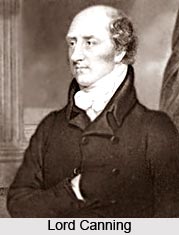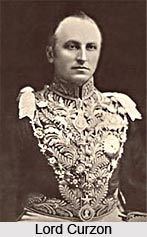 When delineated on the basis of territorial grounds, British Empire prior to and after World War I had differed vastly in almost all aspects. Practically seizing everything of all the sections of Asia under its sway, British Empire had even extended its prolonged arm towards Africa as well as Australia. However, as one comprehends in present times, British Empire indeed had redefined its territorial and administrational periphery during its rendezvous in the then India, moving on towards the mid-21st century. Administration of British Empire upon what is referred to as `British India`, had all begun during the reign of East India Company, when the Company had decided to transact trade and business ties, extending towards the eastern civilisation. That was the time during mid-17th century, when Islamic rule under Mughal Empire was in its last phase, stripped off of all its erstwhile shining glory and pageantry. As such, British intervention upon Indian administration and governance was readily accepted by Mughal rulers, deeming Indian trading and merchandise to swell up in the upcoming years to come.
When delineated on the basis of territorial grounds, British Empire prior to and after World War I had differed vastly in almost all aspects. Practically seizing everything of all the sections of Asia under its sway, British Empire had even extended its prolonged arm towards Africa as well as Australia. However, as one comprehends in present times, British Empire indeed had redefined its territorial and administrational periphery during its rendezvous in the then India, moving on towards the mid-21st century. Administration of British Empire upon what is referred to as `British India`, had all begun during the reign of East India Company, when the Company had decided to transact trade and business ties, extending towards the eastern civilisation. That was the time during mid-17th century, when Islamic rule under Mughal Empire was in its last phase, stripped off of all its erstwhile shining glory and pageantry. As such, British intervention upon Indian administration and governance was readily accepted by Mughal rulers, deeming Indian trading and merchandise to swell up in the upcoming years to come.
British East India Company had firmly targeted the port cities of India, henceforth bringing in Calcutta, Bombay, Madras and to some extent, Surat into immense prominence. Flow of business and commerce began to augment by just some months, with industrial builds coming into focus. Through repeated voyages to and from England, the East India Company started to bring in skilled workers, with high-ranking officers also taking a hierarchical position. The so-called `revenue earning` during British India, was taken up seriously by British administration, who were gradually acquiring the place of the setting Mughal dynasty. The country could no longer be referred to as the one ruled by Persian Islamic rulers, who essentially followed an Oriental system of governance; on the contrary, Indian scenario was slowly and steadily witnessing a change on administrational domain. What was previously known as just a Company dealing in trade and business of spices, clothes, fineries and everything attractive to English population, was no longer just a `mere Company`. Taking wholesome advantage of the weaklings like Mughals or any other restricted ruler of a princely state, East India Company had cleverly and shrewdly taken over the entire Indian administration. This they had perhaps long planned in their chartered discussions, with rulers back in England already framing a charter of British Indian administration under British Empire.
 Henceforth, administration of British Empire always had a purpose of its own, with the system of Governor-Generals coming into force. The princely states were still under the declaration of self-ruling, however, staying subordinate to Englishmen. Bombay, Calcutta and Madras were proclaimed Presidency towns, holding in much value of their own, and governing their separate sections of east, north, west and south. High-ranking men already serving in English administration in Great Britain, were called forth to take the seat of Governor-Generals. Warren Hastings, the legendary man of both good and dark sides, was one of the first in this section. India was declared to be governed separately into various states, with one single capital to be based in Calcutta. The time being spoken about is the late 18th century, with the previous years already been fruitfully spent by English to expand their territorial integrity. And herein comes the gradual beginning of the end, i.e. terrible declination of Indian citizens under the crushing hands of British generals and the ironical rise of English population in wrongly-captured hands. Whatever beneficial deeds the British administration had performed, was completely overshadowed and shunned by the incredible pitiless deeds they had performed and was still in a continual process.
Henceforth, administration of British Empire always had a purpose of its own, with the system of Governor-Generals coming into force. The princely states were still under the declaration of self-ruling, however, staying subordinate to Englishmen. Bombay, Calcutta and Madras were proclaimed Presidency towns, holding in much value of their own, and governing their separate sections of east, north, west and south. High-ranking men already serving in English administration in Great Britain, were called forth to take the seat of Governor-Generals. Warren Hastings, the legendary man of both good and dark sides, was one of the first in this section. India was declared to be governed separately into various states, with one single capital to be based in Calcutta. The time being spoken about is the late 18th century, with the previous years already been fruitfully spent by English to expand their territorial integrity. And herein comes the gradual beginning of the end, i.e. terrible declination of Indian citizens under the crushing hands of British generals and the ironical rise of English population in wrongly-captured hands. Whatever beneficial deeds the British administration had performed, was completely overshadowed and shunned by the incredible pitiless deeds they had performed and was still in a continual process.
East India Company ruling during the era of British India for the first time in mid-1800s started to review resistance in the form of wars by Marathas and Sikhs. Hindu rulers like Shivaji or Rani of Jhansi Lakshmi Bai had not planned to take such cunning men lying down. As a result, British top-rankers started to usher in the framing and passing of rules into harsh laws, which further held back Indian rights of freedom. Indeed, law and order during administration of British Empire is not an aspect that is still looked at as something much promising and beneficial to natives. Historians and researchers, who have laid stress on the bright side of British India, however fail to scout any good deed ever performed under such authoritarian law and order. The Policy of Ring Fence or Buffer state, British Administration in India however stood in somewhat stark contrast against anti-Indian British law and order. With the arrival of Lord Wellesley to India, the stringent motive of the Company was pretty reduced, with petty states like Oudh, Hyderabad and Mysore acceding to British pressure. The high-point of East India Company resistance was seen during the Sepoy Mutiny in 1857, also legendary as the Revolt of 1857. The magnanimous unity amongst Muslim and Hindu rulers to rise up against such oppressors and nepotists was a sheer element of wonder and superb strategy. This historic and fate-deciding First Battle of Indian Independence was one that had nearly alarmed generals back in England, who had since reviewed the Company incurring huge losses for the administration and trade for both English in India and Britain. Time had once more arrived for India to witness a policy of change for the still-living, as millions had laid down their lives during the Revolt, dreaming for their motherland.
Administration of British Empire post Sepoy Mutiny, precisely from 1858, began to witness an impermanent time of crisis, with neither England nor the East India Company coming to a conclusion about their ruling in India. However, the Company was forever frozen and dissolved as a cohesive political unit in India, with its administrators returning back to England. Post 1876, the princely states in India and the political union of India was transferred and annexed under direct ruling from England under Her Highness, Queen Victoria. Each Indian had to from then onwards accept British paramountcy, with the Queen vowing to bring in massive changes, facilitating the Indians. However, such words were only just the tip of the iceberg of colossal destruction. In fact, all those rosy and prim promises made by Queen Victoria completely were smashed under the ruthless Viceroys to India, who used their position as a mere tool to be sadistic to native `blacks`. The likes of Lord Curzon during Crown rule, or Lord Dalhousie, during Company rule, accompanied by the merciless and unforgiving army generals, made an Indian life comparable to hell, with each passing day. The declarations of equality in all fields of economy, politics, career, farming, religious rituals or territorial boundaries were all completely forgotten, with absolutely the reverses taking place, misery and nightmare filling every native home.
The era of late 1800s, culminating in the mid-1900s was perhaps the most crucial and deciding time period in British Raj. Administration of British Empire had witnessed an absolute mish-mash of ruling policies in every sphere of daily life, that included revenue earning through indigo plantation, policy of Divide and Rule and passing of umpteen laws into acts, to curb down natives against their civil or human rights. Nationalists, revolutionists, freedom fighters - in whatever name they are respected, arose against such unruly government from every Indian household.  Equipped with educative values, intelligence and valiance to withstand British guns, these nationalists possessed the prowess to protest and march into the court houses that had come into force with the dawning of a new century. Supreme Court or the state High Courts were begun, together with the concept of an Executive Council, wherein, business of each government department was delegated to and became the responsibility of a single Council member. This was largely the policy of Lord Canning, first Viceroy to India. In his regard, the British Parliament was of the habit to interfere in most decisions taken back in India, by the British Indian administration. The concept of Local Self Government also had come into existence, owing to the Minto-Morley Reforms Act in 1909 (also known as the Government of India Act 1909). Considered a milestone under administration during British Empire, this act had only paved way for further restrictive acts, like the various even-stricter Government of India Acts. These acts had heavily borrowed from the acts devised by Lord Dalhousie and his ruling acts like Permanent Settlement Act 0f 1793, or the Vernacular Press Act of 1878.
Equipped with educative values, intelligence and valiance to withstand British guns, these nationalists possessed the prowess to protest and march into the court houses that had come into force with the dawning of a new century. Supreme Court or the state High Courts were begun, together with the concept of an Executive Council, wherein, business of each government department was delegated to and became the responsibility of a single Council member. This was largely the policy of Lord Canning, first Viceroy to India. In his regard, the British Parliament was of the habit to interfere in most decisions taken back in India, by the British Indian administration. The concept of Local Self Government also had come into existence, owing to the Minto-Morley Reforms Act in 1909 (also known as the Government of India Act 1909). Considered a milestone under administration during British Empire, this act had only paved way for further restrictive acts, like the various even-stricter Government of India Acts. These acts had heavily borrowed from the acts devised by Lord Dalhousie and his ruling acts like Permanent Settlement Act 0f 1793, or the Vernacular Press Act of 1878.
Administration of British Empire during the dawning of 20th century was indeed defined on the lines of these British Indian Acts, regulating and horribly crushing the native press, which had risen its head to blatantly protest these ruthless clandestine English motives. Policy of Equal Federation, British Administration in India and Policy of subordinate Union, British Administration in India were some of the other governing measures that had completely shattered Indian conscience during and after the two World Wars. Freedom fighters wholly echoed against such divide and rule policy to mother antagonism within religious factions, which had finally turned into a reality in 1947, with Partition of India, perhaps forever darkening the wholesome vision of Indian Independence.



















